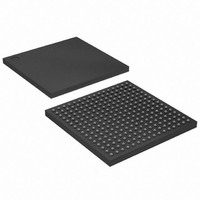XC3S250E-4FTG256C Xilinx Inc, XC3S250E-4FTG256C Datasheet - Page 67

XC3S250E-4FTG256C
Manufacturer Part Number
XC3S250E-4FTG256C
Description
IC SPARTAN-3E FPGA 250K 256-FTBG
Manufacturer
Xilinx Inc
Series
Spartan™-3Er
Datasheet
1.XC3S100E-4VQG100C.pdf
(233 pages)
Specifications of XC3S250E-4FTG256C
Total Ram Bits
221184
Number Of Logic Elements/cells
5508
Number Of Labs/clbs
612
Number Of I /o
172
Number Of Gates
250000
Voltage - Supply
1.14 V ~ 1.26 V
Mounting Type
Surface Mount
Operating Temperature
0°C ~ 85°C
Package / Case
256-LBGA
No. Of Logic Blocks
5508
No. Of Gates
250000
No. Of Macrocells
5508
No. Of Speed Grades
4
No. Of I/o's
190
Clock Management
DLL
Lead Free Status / RoHS Status
Lead free / RoHS Compliant
Other names
122-1482
Available stocks
Company
Part Number
Manufacturer
Quantity
Price
Company:
Part Number:
XC3S250E-4FTG256C
Manufacturer:
TOS
Quantity:
3 012
Company:
Part Number:
XC3S250E-4FTG256C
Manufacturer:
XILINX
Quantity:
281
Part Number:
XC3S250E-4FTG256C
Manufacturer:
ALTERA/阿尔特拉
Quantity:
20 000
Configuration
For additional information on configuration, refer to UG332:
Spartan-3 Generation Configuration User Guide.
Differences from Spartan-3 FPGAs
In general, Spartan-3E FPGA configuration modes are a
superset to those available in Spartan-3 FPGAs. Two new
modes added in Spartan-3E FPGAs provide a glue-less
configuration interface to industry-standard parallel NOR
Flash and SPI serial Flash memories.
Configuration Process
The function of a Spartan-3E FPGA is defined by loading
application-specific configuration data into the FPGA’s
internal, reprogrammable CMOS configuration latches
(CCLs), similar to the way a microprocessor’s function is
defined by its application program. For FPGAs, this configu-
ration process uses a subset of the device pins, some of
which are dedicated to configuration; other pins are merely
Table 44: Spartan-3E Configuration Mode Options and Pin Settings
DS312-2 (v3.8) August 26, 2009
Product Specification
M[2:0] mode pin
settings
Data width
Configuration memory
source
Clock source
Total I/O pins
borrowed during
configuration
Configuration mode
for downstream
daisy-chained FPGAs
Stand-alone FPGA
applications (no
external download
host)
Uses low-cost,
industry-standard
Flash
Supports optional
MultiBoot,
multi-configuration
mode
R
Slave Serial
oscillator
Platform
<0:0:0>
Internal
Master
Serial
Serial
Flash
Xilinx
8
Industry-standard
Internal oscillator
SPI serial Flash
Slave Serial
<0:0:1>
Serial
SPI
13
www.xilinx.com
Industry-standard
Internal oscillator
parallel
<0:1:1>=Down
Flash or Xilinx
Slave Parallel
parallel NOR
<0:1:0>=Up
Byte-wide
Flash
BPI
46
Platform
borrowed and returned to the application as general-pur-
pose user I/Os after configuration completes.
Spartan-3E FPGAs offer several configuration options to
minimize the impact of configuration on the overall system
design. In some configuration modes, the FPGA generates
a clock and loads itself from an external memory source,
either serially or via a byte-wide data path. Alternatively, an
external host such as a microprocessor downloads the
FPGA’s configuration data using a simple synchronous
serial interface or via a byte-wide peripheral-style interface.
Furthermore, multiple-FPGA designs share a single config-
uration memory source, creating a structure called a daisy
chain.
Three FPGA pins—M2, M1, and M0—select the desired
configuration mode. The mode pin settings appear in
Table
of configuration when the FPGA’s INIT_B output goes High.
After the FPGA completes configuration, the mode pins are
available as user I/Os.
44. The mode pin values are sampled during the start
Slave Parallel or
XCFxxP Platform
microcontroller,
Platform
Any source via
generates CCLK
Slave Parallel
External clock
on CCLK pin
Possible using
CPU, Xilinx
Flash, which
Byte-wide
Memory
optionally
Mapped
<1:1:0>
parallel
etc.
21
Flash,
microcontroller,
XCFxxP Platform
Platform
Any source via
generates CCLK
External clock
Possible using
Slave Serial
on CCLK pin
Slave Serial
CPU, Xilinx
Flash, which
optionally
<1:1:1>
Serial
etc.
8
Functional Description
Flash,
ACE
microcontroller,
Any source via
External clock
CPU,
on TCK pin
<1:0:1>
™
JTAG
Serial
JTAG
System
0
CF, etc.
67

















